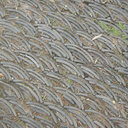Comparative pharmacokinetic profiles of tectorigenin in rat plasma by UPLC-MS/MS after oral administration of Iris tectorum Maxim extract and pure tectoridin.
Keywords
Abstract
Iris tectorum Maxim, a well-known herb medicine, is commonly used for treatment of inflammation, cough, and pharyngitis for a long time in China. Tectoridin, main active ingredient of Iris tectorum Maxim, is often used for its quality control. This study was aimed to analyze the pharmacokinetic profile of tectorigenin (the metabolite of tectoridin) after oral administration of I. tectorum Maxim extract, and to compare the pharmacokinetic characterization of tectorigenin after oral administration of I. tectorum Maxim extract (ITME) and pure tectoridin (PT) in rats. In addition, a simple, reliable and sensitive UPLC-MS/MS method was developed for determination of tectorigenin in rat plasma, using kaempferol as internal standard. The processed samples were separated on a Poroshell 120 SB-C₁₈ column and detected by positive electrospray ionization in multiple reaction monitoring (MRM) mode. The method validation results indicated that the established method was simple, specific and reliable. The pharmacokinetic results showed that the plasma concentration of tectorigenin in ITME group was much higher than that of the PT group (p<0.01). Moreover, compared to PT group, t₁/₂ value and AUC(0-∞) value were also notably increased in ITME group (p<0.01). In conclusion, potential interaction exists between those chemical components in ITME, and the co-existing components in ITME could notably promote the absorption of tectoridin in rats, however, the exact compound(s) which enhance the absorption of tectoridin should be investigated in future study.




